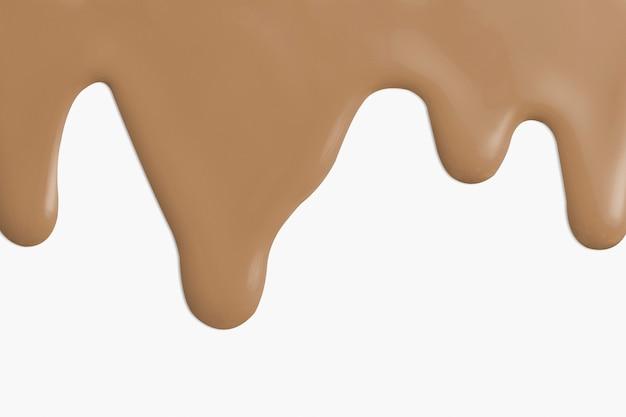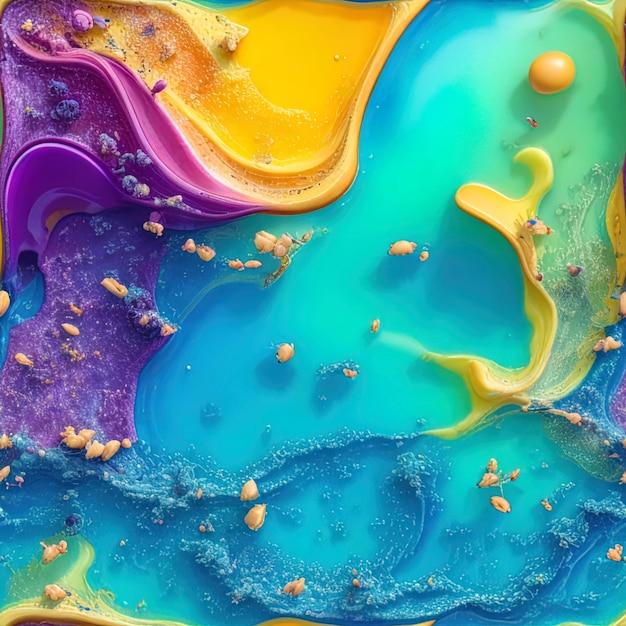Acrylic, a versatile and widely used material, has gained popularity in various industries for its durability and aesthetic appeal. Whether you’re an artist, a DIY enthusiast, or simply curious about working with acrylic, you might have wondered if it’s possible to melt this thermoplastic material. In this blog post, we will dive into the world of acrylic and explore its melting point, properties, and potential uses.
From answering common queries such as the difference between acrylic and plexiglass, to understanding the temperature limits and mechanisms involved in melting acrylic, we’ll cover it all. Additionally, we’ll explore various techniques for fixing and molding acrylic, and learn about its applications, including its viability for kitchen cabinets.
So, if you’re keen on unlocking the potential of acrylic or simply interested in expanding your knowledge about this fascinating material, join us as we embark on this journey to explore the possibilities and limitations of melting acrylic.
Estimated Read Time: 2 minutes
Can You Melt Acrylic
Understanding the Melting Point of Acrylic
Acrylic, often used in craft projects, signage, and even furniture, is a popular material known for its versatility and durability. But have you ever wondered if you can melt acrylic? Well, get ready to delve into the world of acrylic melting points and find out the truth!
Knowing the Temperature Threshold
When it comes to melting acrylic, temperature is the key factor. While acrylic can withstand high temperatures, it does have a melting point like any other material. The melting point of acrylic can vary depending on the type and grade, but generally falls within the range of 160 to 190 degrees Celsius (320 to 374 degrees Fahrenheit).
Don’t Grab That Blowtorch Just Yet!
Before you pull out your blowtorch and start envisioning all those creative possibilities, it’s essential to note that melting acrylic requires caution and specific tools. While it is possible to melt acrylic, it’s important to approach it with the right technique and equipment to avoid any mishaps.
The Safe Way: Heating with a Heat Gun or Oven
To melt acrylic safely, a heat gun or an oven is your go-to tool. These methods allow you to apply controlled heat, ensuring the acrylic reaches its melting point without damaging it. However, it’s crucial to monitor the temperature closely to prevent overheating, warping, or discoloration.
Play It Cool: Cooling Down Your Molten Creation
Once you’ve successfully melted the acrylic into a desired shape or form, it’s time to let it cool down. This step is critical as it allows the melted acrylic to solidify and maintain its new structure. Be patient and avoid rushing the cooling process; otherwise, you might end up with a deformed blob rather than a masterpiece!
A Splash of Creative Ideas
Now that you’ve discovered the secrets of melting acrylic, let your imagination run wild with some exciting ideas! Create unique sculptures, experiment with abstract designs, or even fashion your own customized accessories. With a little heat and flair, you can transform acrylic into a work of art.
Safety First: Ventilation and Protective Gear
Remember, when working with any materials that involve heat, ventilation is necessary to avoid the inhalation of fumes. Always work in a well-ventilated area, or consider using a respirator if melting acrylic frequently. Additionally, wearing protective gear, such as heat-resistant gloves and goggles, will ensure you can safely unleash your creative powers without any unwanted accidents.
So, can you melt acrylic? Absolutely! Just remember to use the right tools, follow safety precautions, and unleash your creativity responsibly. Melting acrylic opens up a world of artistic possibilities, allowing you to shape and mold this versatile material into your desired vision. So, grab your heat gun, get your oven preheated, and let your creative juices flow in the world of molten acrylic masterpieces!
FAQ: Can You Melt Acrylic
Welcome to our comprehensive FAQ guide on melting acrylic! If you’ve ever wondered whether acrylic can be melted, how to fix it, or the differences between acrylic and plexiglass, you’re in the right place. In this FAQ-style article, we’ll cover everything you need to know about melting acrylic, its properties, and its various uses. So let’s dive right in!
Does Acrylic Break Easily
No material is completely indestructible, but acrylic is known for its durability. While it can withstand a fair amount of impact, it is not immune to breaking. However, compared to glass, acrylic is more resistant to shattering, making it a safer option for certain applications.
How Much Does a Piece of Acrylic Cost
The cost of acrylic can vary depending on factors such as size, thickness, and quality. On average, a square foot of acrylic sheet can range from $10 to $80. Higher-quality acrylic might be more expensive, but it often offers better clarity, durability, and resistance to scratching.
What Is the Temperature an Acrylic Sheet Can Withstand
Acrylic has a relatively low melting point compared to other materials. It typically starts to soften between 230°F and 250°F (110°C and 120°C), and it can fully melt around 320°F (160°C). It’s important to note that exposure to high temperatures can cause acrylic to warp or deform.
What Is the Difference Between Acrylic and Plexiglass
Acrylic and plexiglass are often used interchangeably, but there is a slight difference between the two. Acrylic is a type of plastic, while plexiglass is a brand name for acrylic sheets. Think of plexiglass as a specific brand, like Kleenex for tissues. Both terms generally refer to the same material, though.
Is Acrylic a PMMA
Yes, acrylic is an abbreviation for polymethyl methacrylate, commonly known as PMMA. It is a synthetic resin made from the polymerization of methyl methacrylate monomers. PMMA is widely used across various industries due to its transparency, impact resistance, and versatility.
Can You Melt Acrylic Together
Yes, acrylic can be melted and fused together. This process is commonly used in acrylic fabrication and repair. By heating the edges of two acrylic pieces with a heat source such as a blowtorch or heat gun, they can be softened and then pressed together to create a strong bond.
Can I Use Glue Gun on Acrylic
Using a glue gun on acrylic is not recommended. The high temperatures of the glue gun can melt or warp the acrylic, resulting in a messy and weak bond. It’s best to use adhesives specifically designed for acrylic, such as acrylic cement or special acrylic adhesives.
Can You Thermoform Acrylic
Yes, acrylic can be thermoformed. Thermoforming is a process where acrylic is heated until it becomes pliable, allowing it to be shaped or molded. This technique is commonly used in industries such as automotive, furniture, and product design to create custom shapes and forms from acrylic sheets.
What Happens When You Heat Acrylic
When heated, acrylic becomes soft and pliable. As the temperature continues to rise, it will eventually reach its melting point and fully melt. However, it’s important to control the heating process carefully, as excessive heat can cause acrylic to warp, bubble, or scorch.
How Do You Fix Acrylic
Fixing acrylic can be done through various methods depending on the type of damage. Small cracks or scratches can often be buffed out using a polishing compound, while larger cracks or breaks may require the use of acrylic cement or adhesives. In extreme cases, replacing the damaged piece might be necessary.
Is Acrylic Good for Kitchen Cabinets
Yes, acrylic is an excellent choice for kitchen cabinets. Its glossy finish, durability, and resistance to moisture and stains make it a popular option for modern kitchen designs. Acrylic cabinets are easy to clean and maintain, and they can give your kitchen a sleek and contemporary look.
Is Melting Acrylic Toxic
When heated, acrylic can release fumes that may irritate the respiratory system. It is essential to work in a well-ventilated area or wear a respirator when melting acrylic. Avoid direct inhalation of the fumes to minimize any potential health risks. Always prioritize safety when working with any material.
What Temperature Does Acrylic Melt
Acrylic generally starts to soften between 230°F and 250°F (110°C and 120°C). It fully melts around 320°F (160°C). It’s crucial to monitor the temperature carefully during the melting process, as exceeding the melting point can damage or degrade the acrylic material.
Can Acrylic Tanks Leak
When properly fabricated and maintained, acrylic tanks are incredibly durable and resistant to leaks. However, over time, certain factors such as poor construction, excessive pressure, or inadequate maintenance can lead to leaks. Regularly inspecting and maintaining your acrylic tank will help prevent leaks and ensure its longevity.
Why Is Acrylic So Expensive
Several factors contribute to the cost of acrylic. First, the raw materials used in its production can be pricey. Additionally, the manufacturing process for acrylic requires specialized equipment and techniques. The high demand for acrylic in various industries also plays a role in its pricing. Despite the cost, acrylic’s exceptional properties and versatility make it a worthwhile investment for many applications.
Does Gorilla Glue Work on Acrylic
Gorilla Glue is not recommended for bonding acrylic. While it may create a strong bond on some materials, it generally does not provide the best results on acrylic. It is advisable to use adhesive products specifically designed for acrylic, as they offer superior adhesion and compatibility with the material.
What Is the Main Disadvantage of Acrylic Enhancements
Acrylic enhancements, such as acrylic nails, have their drawbacks. The main disadvantage is that they can weaken natural nails if not properly applied or maintained. Acrylic enhancements require regular maintenance and careful removal to minimize the risk of nail damage or fungal infections.
What Glue Works Best on Acrylic
Acrylic cement or adhesives specially formulated for acrylic are the best options for bonding acrylic surfaces. These adhesives create strong and durable bonds, ensuring that the acrylic remains firmly secured. It’s always recommended to follow the manufacturer’s instructions and test the adhesive on a small area before applying it to your acrylic project.
How Do You Melt Acrylic Molds
Melting acrylic molds can be achieved by heating them in an oven or with a heat gun. It’s crucial to monitor the temperature carefully to avoid overheating or deforming the molds. Once the acrylic has melted, pour it into a new mold or shape it as desired before allowing it to cool and solidify.
What Are the Pros and Cons of Acrylic
Acrylic offers several advantages and disadvantages worth considering. Some pros include its high transparency, impact resistance, lightweight nature, and ease of fabrication. On the other hand, some cons include susceptibility to scratches, lower chemical resistance compared to glass, and the potential for warping under high temperatures.
What Are the Disadvantages of Acrylic Fabric
Acrylic fabric, commonly used in clothing and textiles, has a few disadvantages. It can pill or fuzz easily, which can diminish the appearance and quality of the fabric. Acrylic fabrics are also less breathable compared to natural fibers like cotton or wool. However, acrylic fabrics do offer benefits such as resistance to stretching and fading.
What Are the Main Properties of Acrylic
Acrylic possesses several key properties that make it popular across various industries. These include high light transmission, excellent clarity, impact resistance, weatherability, chemical resistance, and ease of fabrication. Its versatility and wide range of applications are a testament to its exceptional properties.
That concludes our comprehensive FAQ guide on melting acrylic. We’ve covered a wide range of questions regarding its properties, uses, and potential issues. Whether you’re interested in working with acrylic, looking to repair it, or simply curious about its characteristics, this guide has provided you with the information you need. Remember to always prioritize safety when handling acrylic and refer to expert guidance for specific projects. Happy crafting and creating with acrylic!

